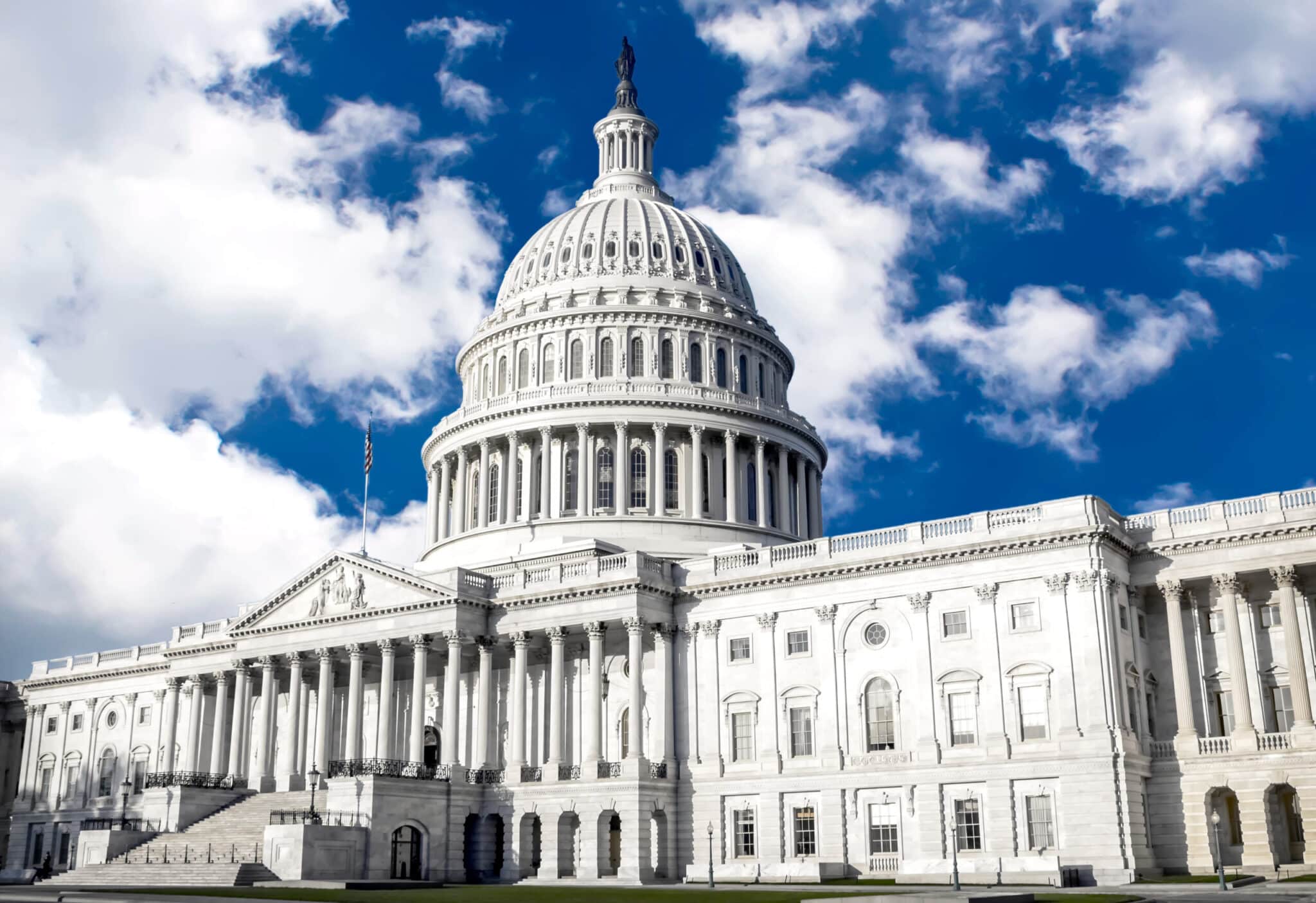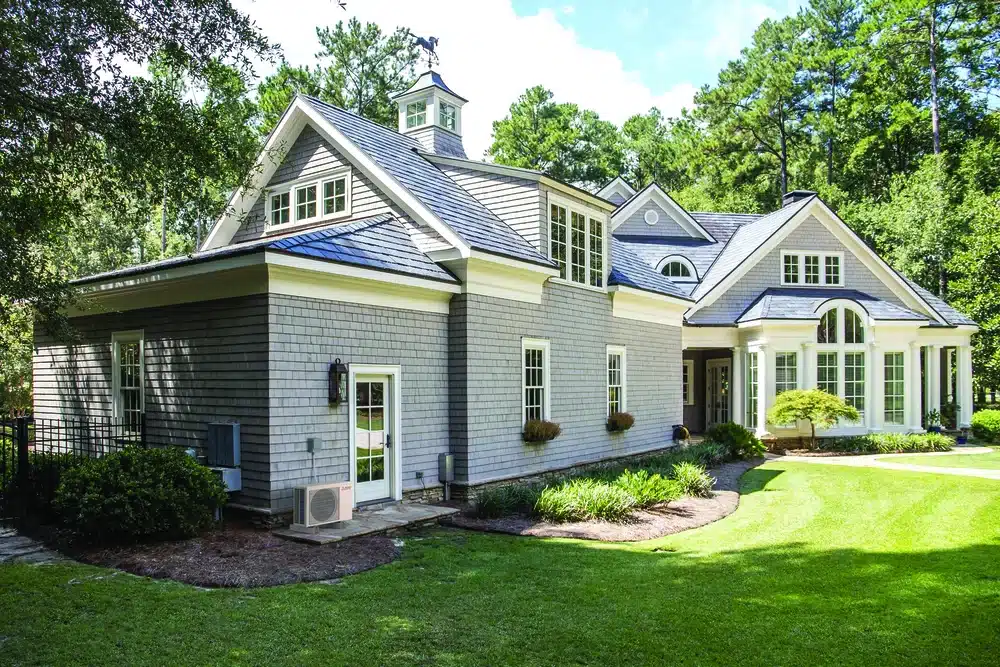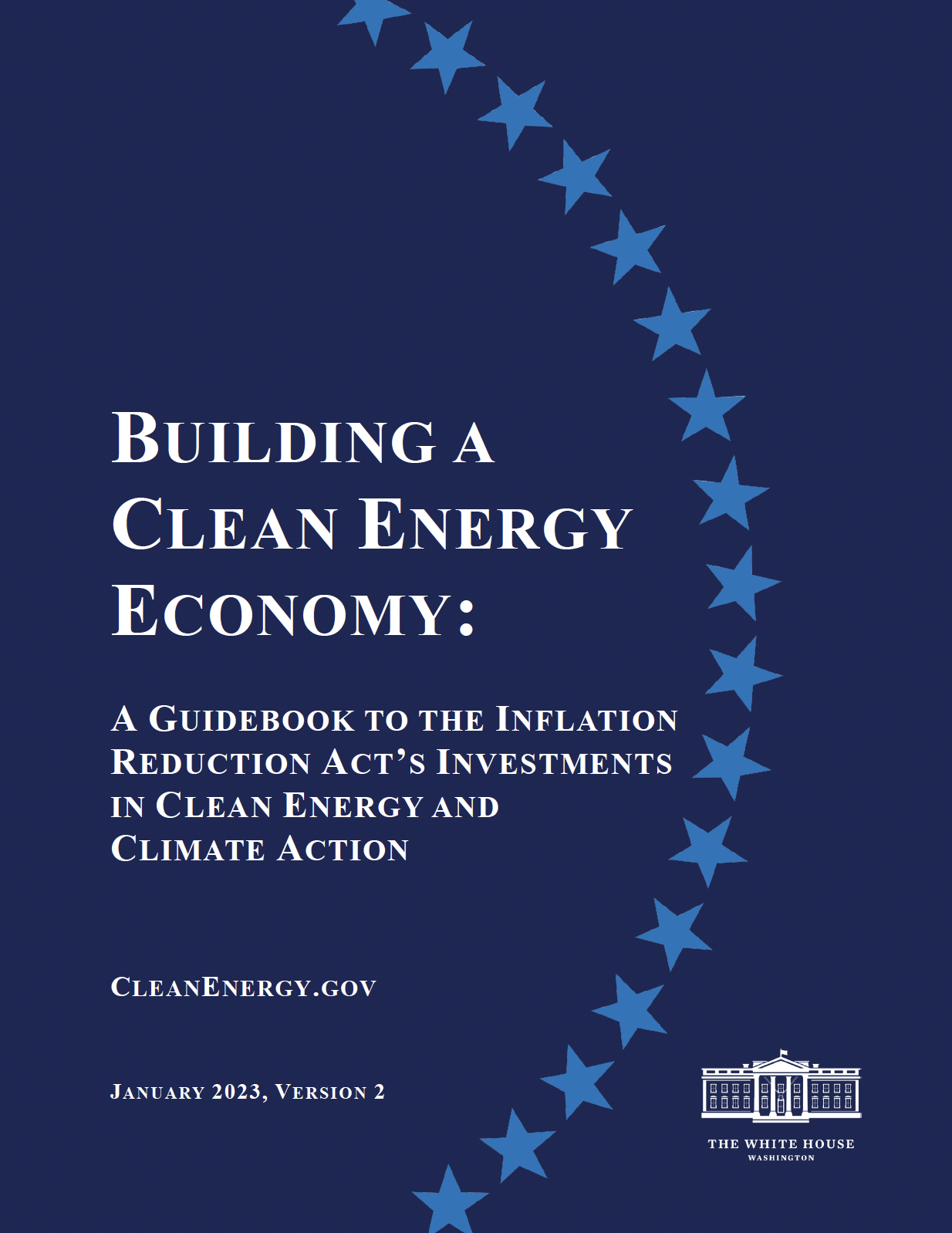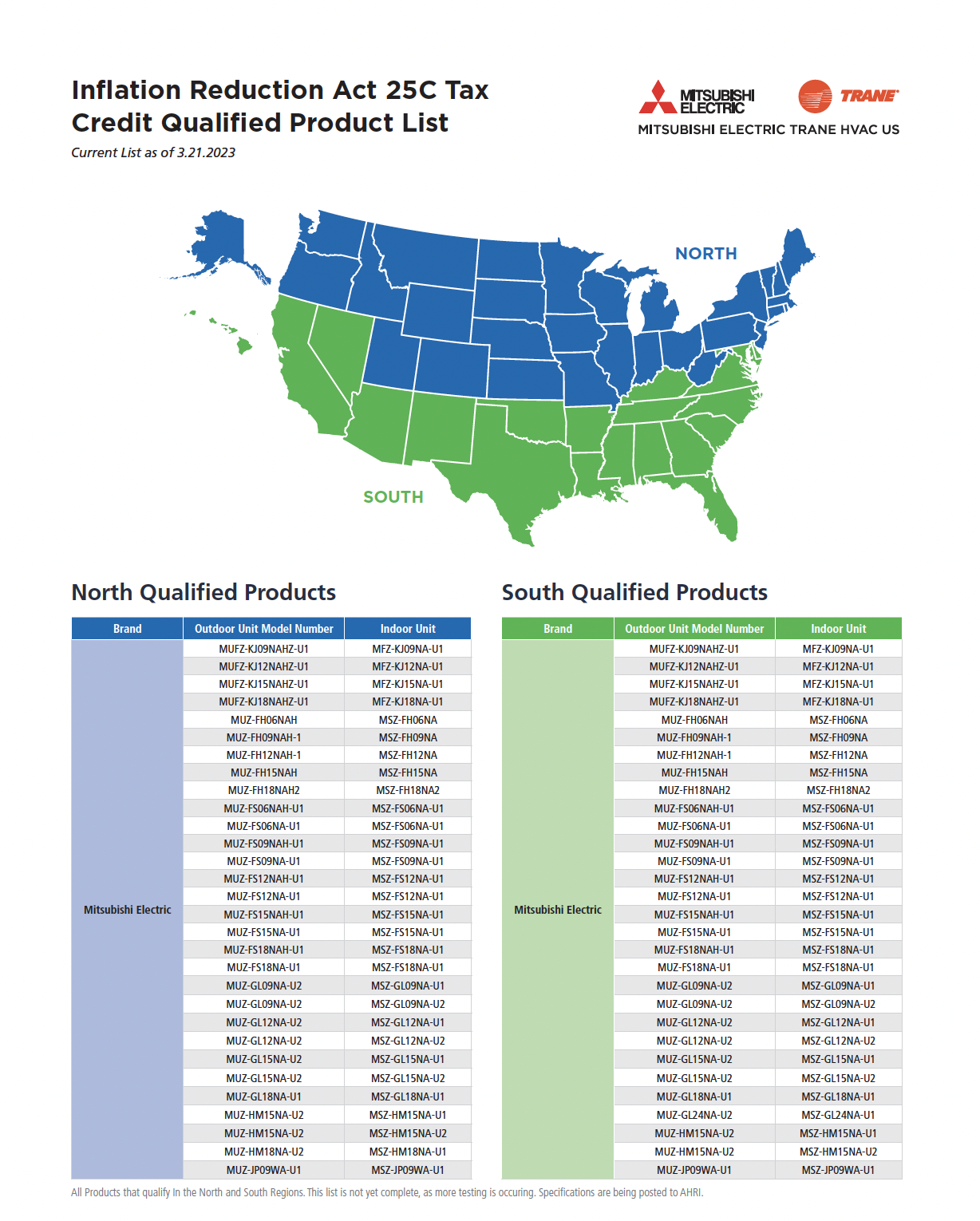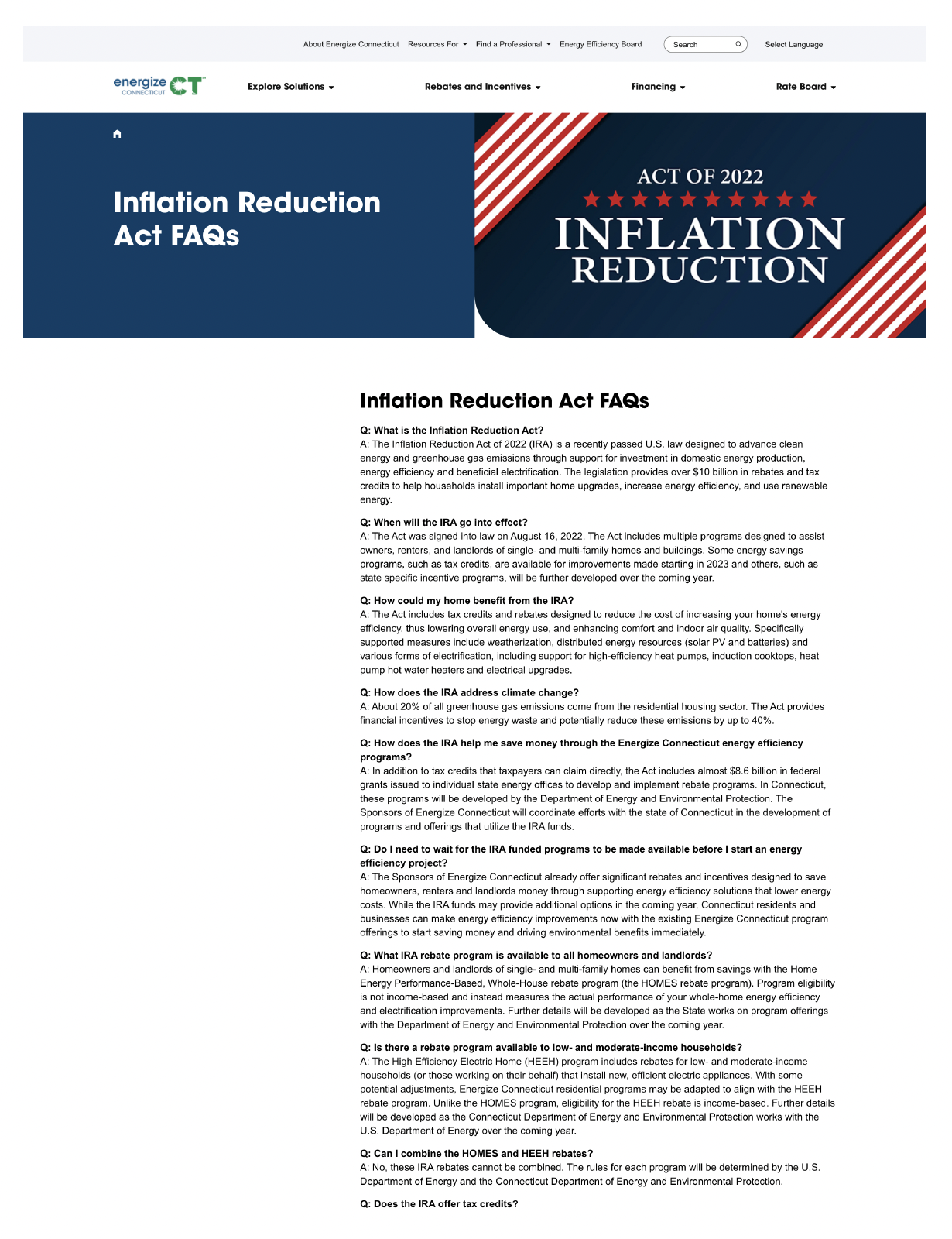The Inflation Reduction Act
Unprecedented opportunities for the HVAC Industry with variable-capacity heat pumps
The Inflation Reduction Act of 2022 (IRA) is the largest ever climate investment by the Federal Government in American history, projected to reduce greenhouse gas (GHG) by 31-44% below 2005 levels by 2030. The IRA will also bring energy bill relief to U.S. households by incentivizing the adoption of more efficient, all-electric appliances. Importantly, the IRA fully recognizes the key role of highly efficient, variable-capacity heat pumps in slashing domestic GHG emissions and lowering energy costs for Americans. In fact, at least 87% of U.S. households,104.7 million, could save $37.3 billion a year on energy bills if they were using modern, high-performance heat pumps and water heaters. The programs with the biggest direct impact on variable-capacity heat pump adoption are the High-Efficiency Electric Home Rebate Program (HEEHRP), HOMES Rebate Program, and the extension and enhancement of the 25C tax credit. Both programs will create unprecedented growth opportunities for METUS, our distributors, and our contractors. This brochure provides an overview of these programs, and others, that you’ll want to become familiar with.
High Efficiency Electric Home Rebate Program (HEEHRP)
- Allocates $4.5 billion in grants to states and tribal governments for home energy improvement projects including point-of-sale heat pump rebates.
- 10-year program, administered through State Energy Offices, likely to start mid-2023.
- Parameters of state-administered programs may vary.
- Single-home maximum cost offset is $14,000
- Caps on rebates per qualified equipment type:
- $8,000 for a heat pump.
- $1,750 for a heat pump water heater.
- $1,600 for insulation, air sealing, and ventilation.
- $2,500 for electric wiring.
- $4,000 for an electric load center upgrade.
- $840 for a stove, cooktop, range, oven, or heat pump clothes dryer.
- Up to a $500 rebate is available for our contractors per heat pump installation.
- ENERGY STAR® will be the criteria to qualify heat pump systems.
- Designed to support low-to-moderate income (LMI) households.
- Example:
- Households making up to 80% of local median income are eligible to receive a 100% rebate of up to $8,000 on the cost of heat pump installation.
- Moderate-income households (making 80-150% of local median) are eligible for a 50% rebate up to the same limits.
- E.g., To claim up to the cap of $8,000, must spend $16,000 in heat pump installation.
- Households with incomes above 150% of local median are not eligible.
- Example:
- No stacking with other federal or state grants/rebates on same project. There are options for combining rebates. See possible scenarios below in the FAQ section.
– Allocates $4.5 billion in grants to states and tribal governments for home energy improvement projects including point-of-sale heat pump rebates.
– 10-year program, administered through State Energy Offices, likely to start mid-2023.
Parameters of state-administered programs may vary.
1. Single-home maximum cost offset is $14,000
2. Caps on rebates per qualified equipment type:
- $8,000 for a heat pump.
- $1,750 for a heat pump water heater.
- $1,600 for insulation, air sealing, and ventilation.
- $2,500 for electric wiring.
- $4,000 for an electric load center upgrade.
- $840 for a stove, cooktop, range, oven, or heat pump clothes dryer.
– Up to a $500 rebate is available for our contractors per heat pump installation.
– ENERGY STAR® will be the criteria to qualify heat pump systems.
– Designed to support low-to-moderate income (LMI) households.
Example:
– Households making up to 80% of local median income are eligible to receive a 100% rebate of up to $8,000 on the cost of heat pump installation.
– Moderate-income households (making 80-150% of local median) are eligible for a 50% rebate up to the same limits.
E.g., To claim up to the cap of $8,000, must spend $16,000 in heat pump installation.
– Households with incomes above 150% of local median are not eligible.
– No stacking with other federal or state grants/rebates on same project. There are options for combining rebates. See possible scenarios below in the FAQ section.
Energy Efficient Home Improvement (25C) Tax Credit Details
- A 10-year extension and expansion of the existing 10% tax credit to 30%.
- Begins with the tax year 2023 (January 1, 2023), claim the credit on your 2023 taxes
- Up to $600 maximum per item: breaker panel, insulation, fossil fuel systems (meeting elevated efficiency limits) with a maximum of $1,200 tax credit.
- However, the tax credit increases up to $2,000 for buying and installing a qualified heat pump.
- The heat pump system must meet or exceed the highest performance tier set by the Consortium for Energy Efficiency (CEE).
- Households may claim annually through 2032.
HOMES Rebate Program
- Allocates $4.3 billion in rebates for home energy efficiency improvements basedon DOE-approved modeling tools, with bonus for low income.
- Based on modeled energy savings (measured in kWh, or kWh equivalent) for single and multifamily.
- Rebate levels:
- Homes with energy reduction of 20% are eligible for maximum rebate of $2,000, or half the cost of the retrofit project (whichever is less).
- Homes with energy reduction of 35% are eligible for maximum rebate of $4,000.
- Rebates are double for lower income home owners or owner of multifamily building with lower income tenants (<80% of local median income).
Eligibility
New IRC Section 179D
Effective from January 1, 2023
Previous IRC Section 179D
Effective from January 1, 2006-December 31, 2022
Eligibility
- Commercial building owners
- Designers of buildings owned by:
- Government entities
- Not-for-profit organizations
- Churches and other religious organizations
- Tribal organizations
- Not-for-profit schools and universities
- REITs
- Commercial building owners
- Designers of buildings owned by government entities
Tax Deduction Range
Base Deduction: Sliding scale of 50 cents/sqft for energy savings of 25% and up to $1/sqft for energy savings of 50% or greater Bonus Deduction: Sliding scale of $2.50/sqft for energy savings of 25% and up to $5/sqft for energy savings of 50% or greater
63 cents/sqft – $1.88/sqft per eligible system
Deduction Cap
A three-year cap that allows IRC Section 179D to be claimed on buildings if the previous full deduction claim occurred more than three taxable years ago
Since 2006, there’s been a lifetime cap of $1.80/sqft or $1.88sq/ft with inflation adjustment
Technical Requirements
ASHRAE standard in effect from four years prior to completion of construction
ASHRAE standard in effect from four years prior to completion of construction
Bonus Deduction
- Meet local prevailing wage
- Meet apprenticeship percentage hours for up to 15%
of labor hours
Not applicable
Eligibility
New IRC Section 179D
Effective from January 1, 2023
Previous IRC Section 179D
Effective from January 1, 2006-December 31, 2022
Eligibility
- Commercial building owners
- Designers of buildings owned by:
- Government entities
- Not-for-profit organizations
- Churches and other religious organizations
- Tribal organizations
- Not-for-profit schools and universities
- REITs
Tax Deduction Range
Base Deduction: Sliding scale of 50 cents/sqft for energy savings of 25% and up to $1/sqft for energy savings of 50% or greater Bonus Deduction: Sliding scale of $2.50/sqft for energy savings of 25% and up to $5/sqft for energy savings of 50% or greater
Deduction Cap
A three-year cap that allows IRC Section 179D to be claimed on buildings if the previous full deduction claim occurred more than three taxable years ago
Technical Requirements
ASHRAE standard in effect from four years prior to completion of construction
Bonus Deduction
- Meet local prevailing wage
- Meet apprenticeship percentage hours for up to 15% of labor hours
New Energy Efficient Home Tax Credit (45L) for New Construction
Eligibility: Contractors that build and sell homes meeting specified energy efficiency requirements.
- Single Family Homes: $2,500 for homes that meet ENERGY STAR standards; $5,000 for zero energy ready homes.
- Multifamily Dwellings: $500 per unit that meets ENERGY STAR standards; $1,000 per unit for zero energy-ready units
- Multifamily Dwellings: $2,500 per unit that meets ENERGY STAR standards; $5,000 per unit for zero energy ready units (condition: laborers and mechanics employ contractors and subcontractors that pay prevailing wages.)
Answers to Common Questions
Energy-Efficient Commercial Building Deduction (179D) Changes
- Beginning January 1, 2023, the deduction will be increased.
- Energy reduction (ER) will be lowered from 50% to 25% compared to the most recent ASHRAE Standard 90.1, determination no later than four years prior to the placed-in-service date
- Tax deduction levels:
- $.50 per square foot, plus $.02 for each percentage point above 25% ER, not to exceed $1.00 per square foot
- “Prevailing wage” provision: taxpayers can claim the bonus deduction for $2.50 per square foot, plus $.10 per square foot for each percentage point above 25% ER, not to exceed $5.00 per square foot if the prevailing wage requirement is met (any laborers, workers, contractors, and subcontractors who worked on the project were paid wages not less than base wages determined by local labor authorities).
- The Act introduces new qualified retrofit plan qualifications and removes partial benefit allowances.
- 179D’s expansion will allow 179D deductions to be allocated to any non-profits, tribal properties, and REITs, and it includes the existing provision for publicly funded projects
